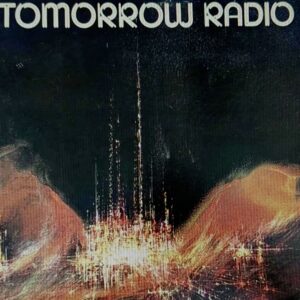A TikTok Advertising Deep Dive – Part 2

In our previous article about how TikTok has become a potent marketing weapon for radio and other businesses, we discussed how rapid growth has enabled TikTok to expand its selection of advertising capabilities to now include zip code targeting. For radio stations playing the hot zip marketing game to influence ratings, or for businesses catering to customers in the immediate surrounding neighborhood, this is welcome news.
In addition to the data that we shared previously about significant everyday use by those in their teens, twenties, and early thirties, NuVoodoo’s summer digital media study also examined the effectiveness of ads on TikTok. Respondents were asked to rate on a six-point scale how often they paid attention to advertising on each of these apps. The percentage selecting the Top 2 Boxes (5+6) reflects frequent attention paid to ads. A third of Millennials, four in ten Zoomers, and nearly half of all ratings-inclined RPS “Yes” radio listeners rated TikTok highly on the ad attention scale.

With TikTok recently making zip code targeting available, NuVoodoo now counts five foundational walled-garden platforms that it relies on for most client-managed service ad campaigns.

For advertisers targeting 18- to 44-year-olds, such as Top 40 or Rhythmic radio formats, TikTok, YouTube, and Instagram together are essential channels for making an impact.
More About TikTok Zip Code & Other Targeting
Advertisers can pick the zip codes where they want their ads to appear, relying on users’ static IP addresses for location data. Businesses with physical locations or those, like radio, targeting specific parts of the metro, will welcome saving on ad spend and no longer settling for unnecessarily broad geographic targeting.
Zip code targeting is particularly effective for boosting brand recognition and/or driving action at the neighborhood level. TikTok’s algorithm optimizes ad relevance, enhancing audience engagement and budget efficiency. Zip code targeting is currently limited to U.S. zip codes, and zip code + 4 targeting is not supported at present.
For advertisers with large databases, TikTok’s Custom Audiences product enables them to upload contact details about their customers, visitors, and prospects. TikTok will endeavor to match those contact details with data about users of TikTok inventory to create those Custom Audiences, which can be used for ad targeting, excluding members of Custom Audiences from receiving ads or creating lookalike audiences of TikTok inventory users that share commonalities with the members of the uploaded database. Used in conjunction with zip code targeting, Custom Audiences, and lookalike modeling give stations and other advertisers the ability to precisely target and move metrics of success in an extremely cost-efficient manner.
It’s important to know that narrow targeting may reduce impressions and raise costs. Targeting small areas always has some impact on ad performance. So, when less granular targeting is okay, TikTok ads offer broader geographic options, including countries, regions, states, metro areas, and cities. Advertisers can aim at up to 1500 location selections in any one campaign ad group and certain businesses may face policy constraints related to housing, employment, and credit ads on TikTok. In addition, NuVoodoo’s political advertisers should be aware that TikTok won’t take your money. No candidate or issues advocacy advertising of any type is accepted.
TikTok Offers Businesses Unique Advertising Options
TikTok offers several interesting ad formats and capabilities, making it a versatile platform for advertisers to engage with its diverse younger user base. Ad types that don’t feel like commercials are recommended, as TikTok is a creator-centric platform.
Among the six different TikTok ad formats, the most popular are In-Feed ads. These appear organically in users’ feeds and allow likes, comments, and external links. Spark ads are the most effective version of In-Feed ads, as they allow repurposing of other creator content (with permission), or even the advertiser’s own organic post creative. TopView ads are also similar to In-Feed ads but are the first videos that users see, ensuring three seconds of attention. Brand Takeover ads are full-screen ads that play upon the app opening, requiring higher budgets, creativity, and advance planning.
There are also ad formats specially designed for the unique ways consumers interact on TikTok. For example, Branded Effects allow users to create shareable stickers, AR filters, and lenses out of work parts provided by the advertiser as user-generated content. TikTok’s unique Branded Hashtag Challenges (HTC) allow brands to create opportunities for engagement with their audiences. These ads consist of a three- to six-day campaign in which user-generated content appears on the TikTok hashtag challenge page.
Finally, there are additional opportunities such as creator-based ads and influencer collaborations for effective advertising. Let our team at NuVoodoo be your guide. We conduct research, build digital products, and conduct marketing campaigns informed by our own proprietary market research to help advertisers target just the right person at just the right time – and without spending a dollar more than necessary to be optimally effective. Reach us at tellmemore@nuvoodoo.com. We look forward to discussing your needs.




